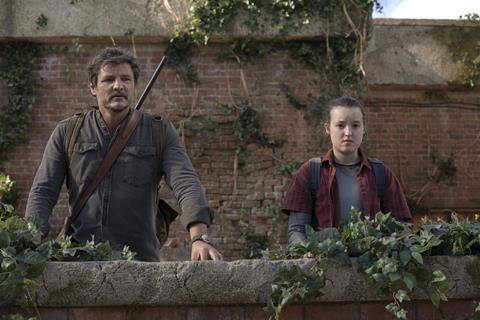
The ground-breaking 2013 PlayStation video game The Last Of Us and its 2020 sequel The Last Of Us Part II were revolutionary not only for their emotional and cinematic storytelling, but for Gustavo Santaolalla’s evocative score, with its haunting use of the Ronroco, a small Andean stringed instrument, alongside a Fender six-string bass popularised by The Beatles and Cream’s Jack Bruce.
“It’s like a guitar but an octave lower,” says the Argentina-born composer of the latter. “It’s a very particular instrument and gave me a lower presence, very opposite of the Ronroco. I do stuff in a very primal way, out of instinct, and then I rationalise. And I realised that there were two poles in the score, one was the feminine side, represented by the Ronroco, and the masculine side was represented by this six-string bass. In the second game, I added the banjo, which was a bridge between the two, but this came after. It wasn’t planned, but it worked.”
So much so that when showrunner Craig Mazin (Chernobyl) and The Last Of Us creator Neil Druckmann set about adapting the first game as an HBO series, Santaolalla’s contribution was paramount. The pair not only hired him to produce the score, but requested he adapt his iconic game music for TV. “Neil and Craig were so kind to say my music is part of the DNA of the game,” says Santaolalla. “I feel if you would have changed the music or put something else it would have been like taking out a character from the story. We use the same themes and same sonic fabric. I never really felt I was writing the music for a video game. I always felt I was writing the music for a great story, a story you could do with puppets or as an animation piece or in theatre.”
The Last Of Us TV show uses a lot of much of the original score reworked from the game, alongside new music written in conjunction with David Fleming. “The adaptations, the new writing all comes out of us,” says Santaolalla. “There’s some additions and stuff from David, which are usually more related to action. But it’s really a team effort. I have Juan Luqui, Jake Staley and Anibal Kerpel working with me all the time, plus David, with his people, so it’s a collaborative effort.”
Santaolalla signed his first record deal at 17, and co-founded Arco Iris, a band that fused Latin American music with rock. Since then, he’s worked as a soloist, performed with several number of groups, and produced “more than a hundred albums of alternative music of Latin America”. But it was his 1998 album Ronroco, recorded over 13 years, that changed the course of his career when Michael Mann used a track for his 1999 film The Insider.

Around the same time, Santaolalla was approached by Mexican filmmaker Alejandro G. Iñárritu to write the music for his directorial debut Amores Perros, and he followed it with scores for The Motorcycle Diaries, 21 Grams, Babel, and Brokeback Mountain, winning back-to-back Oscars for the latter two, although he doesn’t consider himself to be a film composer per se. “I see myself more as an artist that chooses different mediums. Sometimes I do music for a video game or a movie, sometimes I play solo, sometimes I produce other artists, sometimes I play in a group.”
Santaolalla has been Emmy-nominated for his work on episode three of The Last Of Us. Featuring mostly new music, some familiar themes, as well as several needle drops — including the 1970 song Long, Long Time by Linda Ronstadt that gives the episode its name — it’s a remarkable and moving 75 minutes of television centring on the decade-long love story of Bill (Nick Offerman), a paranoid survivalist from the first game, and Frank (Murray Bartlett).
“It’s a delicate subject, because it’s not something usually [seen] in the mainstream,” says Santaolalla of the episode’s central gay romance, a topic also tackled by Brokeback Mountain. “They were trying to make that movie for 10 years and nobody wanted to do it. But it was a wonderful love story, and again I was tapping into these lonesome characters in a particular moment in history. There’s quite a bit of Ronroco in that episode, but also some harsh and heavy stuff too, and not only in the action things. There’s a cue right before they’re going to go to bed together that is interesting because it has this tension and anticipation, and anxiety factor that works great with an electric guitar. But then there’s the more loving and sweet aspects of the score, too.”























No comments yet